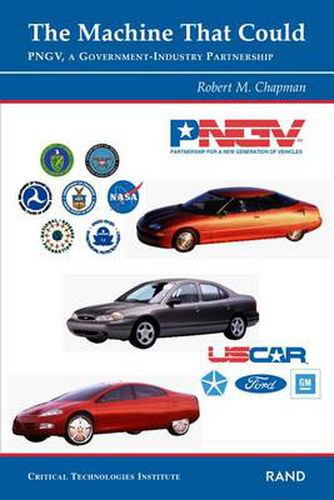Readings Newsletter
Become a Readings Member to make your shopping experience even easier.
Sign in or sign up for free!
You’re not far away from qualifying for FREE standard shipping within Australia
You’ve qualified for FREE standard shipping within Australia
The cart is loading…






In 1993, amid concerns that the U.S. auto industry was losing ground to Japanese competitors, the federal government and the Big Three U.S. automakers (Ford, Chrysler, and General Motors) entered into a unique alliance: the Partnership for a New Generation of Vehicles (PNGV). The PNGV, which also involves universities, suppliers, and other participants, arose from the belief that providing industry with access to technologies generated by federally supported research would allow automakers to develop a high-efficiency, environmentally friendly car–attaining up to 80 miles per gallon–that would still match or surpass today’s vehicles in performance, cost, and safety. In its launch phase, the PNGV faced considerable skepticism, as well as stiff political and organizational challenges. This report tells the story of the program’s beginnings, how it has dealt with these challenges, and its progress to date, which, as of 1998, remains ahead of schedule. It also details lessons that may be useful to managers of similar partnerships in the future. The author was the government’s first technical manager of the PNGV. His account was developed from notes, recollections, and interviews with former colleagues.
$9.00 standard shipping within Australia
FREE standard shipping within Australia for orders over $100.00
Express & International shipping calculated at checkout
In 1993, amid concerns that the U.S. auto industry was losing ground to Japanese competitors, the federal government and the Big Three U.S. automakers (Ford, Chrysler, and General Motors) entered into a unique alliance: the Partnership for a New Generation of Vehicles (PNGV). The PNGV, which also involves universities, suppliers, and other participants, arose from the belief that providing industry with access to technologies generated by federally supported research would allow automakers to develop a high-efficiency, environmentally friendly car–attaining up to 80 miles per gallon–that would still match or surpass today’s vehicles in performance, cost, and safety. In its launch phase, the PNGV faced considerable skepticism, as well as stiff political and organizational challenges. This report tells the story of the program’s beginnings, how it has dealt with these challenges, and its progress to date, which, as of 1998, remains ahead of schedule. It also details lessons that may be useful to managers of similar partnerships in the future. The author was the government’s first technical manager of the PNGV. His account was developed from notes, recollections, and interviews with former colleagues.